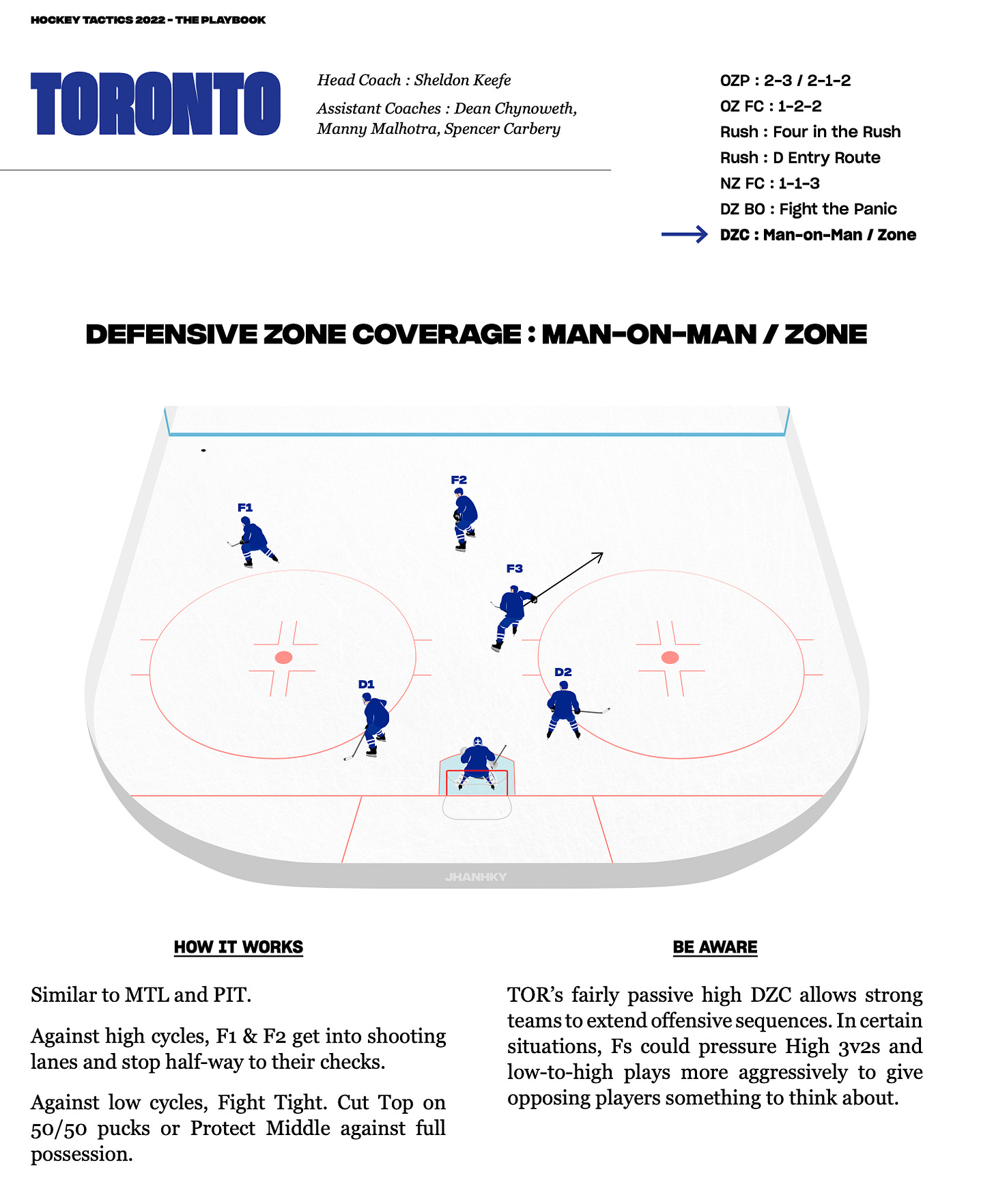

A large number of folks on Twitter suggested I write a primer about the differences between man-on-man and zone defense. It’s an excellent idea, given that I managed to play 10 years of organized hockey without anyone providing me with an explanation that stuck.
Here’s my best attempt at demystifying the man vs. zone dichotomy.
Man-on-Man DZ Coverage
Most NHL teams play man-on-man defense when the puck is high in their zone. This allows defenders to match speed and angle with their checks.
The Colorado Avalanche is playing man DZC.
We see four 1v1s off the puck (yellow lines).
COL8 Cale Makar, a defenseman, has followed the puck carrier to the point to take away his time and space (yellow circle).
Pro: Simple & intuitive defensive formation to teach
Con: Difficult formation to implement, as any 1v1 battle lost results in an odd-men situation toward the net
Vulnerabilities: Bigger/stronger/faster opponents who can win 1v1s, give-and-gos, offensive picks
At its best, man defense allows the defending team to apply pressure and force turnovers anywhere in the DZ.
At its worst, it looks like five chickens with their heads cut off, running around until the red light goes on.
Zone DZ Coverage
A poorly-executed man-on-man defense can look silly, so why not play zone?
It comes down to a fundamental difference between both defensive principles:
In man defense, you skate into the puck carrier
In zone defense, you wait for the puck carrier to skate into you
A Neutral Zone Trap (read 4-part series here) is an effective form of zone defense because the attacking team is obligated to transit the puck through the zone. By packing the space with five skaters, defending teams can prevent controlled entries and force turnovers in the middle.
However, the calculus is quite different in the defensive end zone. A team employing exclusively a zone DZC would be completely unable to stop the possession unless the offensive team committed an unforced error (a missed pass, a blocked shot or a bobbled puck near a zone defender).
Witness the Vancouver Canucks’ zone DZC against an extended Toronto Maple Leafs possession:
The five VAN skaters in white have collapsed to the slot in order to prevent high-danger passes and carries.
On the one hand they’ve formed a wall preventing the TOR puck carrier from attacking the middle. On the other, they’re actually defending very little space - just half of the “house.”
TOR18 Jordie Benn (right D), completely ignored by the VAN zone, sneaks down the back side and scores on a rebound moments later.
Pro: Less demanding than man defense, as you can play it while standing around
Con: Does not proactively force offensive errors & turnovers
Vulnerabilities: Quick puck movement on the perimeter, with player movement between zone defenders (a.k.a. playing between checks)
Due to the contrasting strengths and weaknesses of man and zone defense, every high-level team employs a mix of both against high DZ possessions.
Here’s an example from Hockey Tactics 2022: The Playbook:
As the zone player, F3 can read the play and pressure the third player high, or stay back and cover the slot.
The four other TOR skaters apply moderate man-on-man pressure against perimeter carries as to force defensive stops, create turnovers and initiate breakouts.
All 32 NHL teams’ tactics, illustrated & explained
A collection of 200+ illustrated NHL system sheets, Hockey Tactics 2022 is trusted by 1000+ players, coaches and fans. Use coupon code playoffs at checkout to get $10 off.





